Best Trees That Grow in Shade
Some trees flourish in shaded areas, making them the perfect candidates for creating that much-needed canopy over your yard or garden. Here’s a look at some of the best shade-loving tree species:
American Beech (Fagus grandifolia)
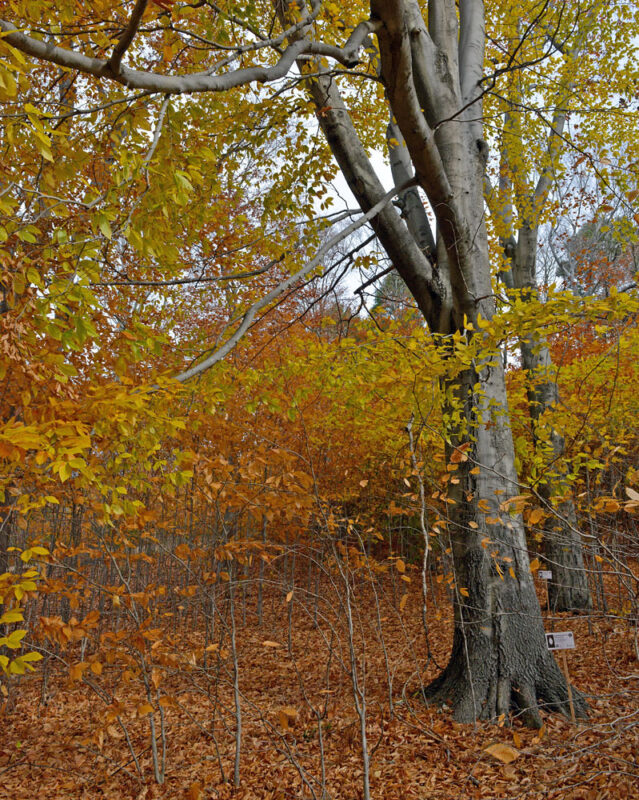
The American Beech stands as a majestic tree with a smooth, silver bark and dense foliage. Typically found in the eastern regions of the United States, it thrives in rich, moist soils but can also adapt to well-drained areas. An American Beech can grow to heights of 50 to 70 feet and provides heavy shade once established. Its large, elliptical leaves turn a beautiful golden-yellow in autumn, adding an extra decorative touch to your landscape.
Beech trees also have a unique ecological benefit; their nut-like seeds, known as beechnuts, are a food source for various wildlife, including squirrels and birds, enhancing biodiversity in your garden.
American Hornbeam (Carpinus caroliniana)
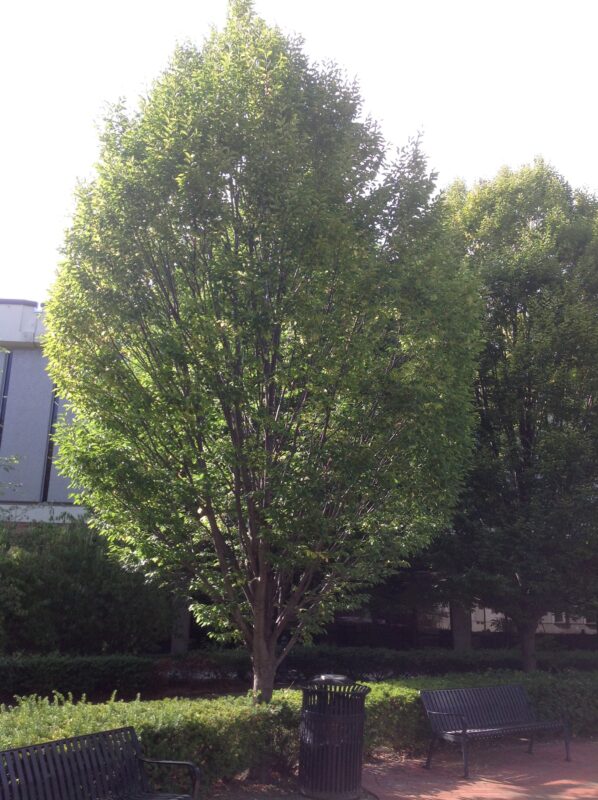
Often referred to as the musclewood due to its remarkably tough wood, the American Hornbeam is a small to medium-sized tree that typically reaches about 30 to 40 feet in height. It thrives in the understory of forests, making it tolerant of shade. Its dark green leaves turn a striking yellow to orange in the fall, creating a visual spectacle.
The tree’s unique, muscle-like bark provides an engaging texture, especially when combined with its underlying curved branches. This adaptability makes it perfect for small yards or shaded areas where larger trees may struggle to thrive.
Big-Leaf Maple (Acer macrophyllum)
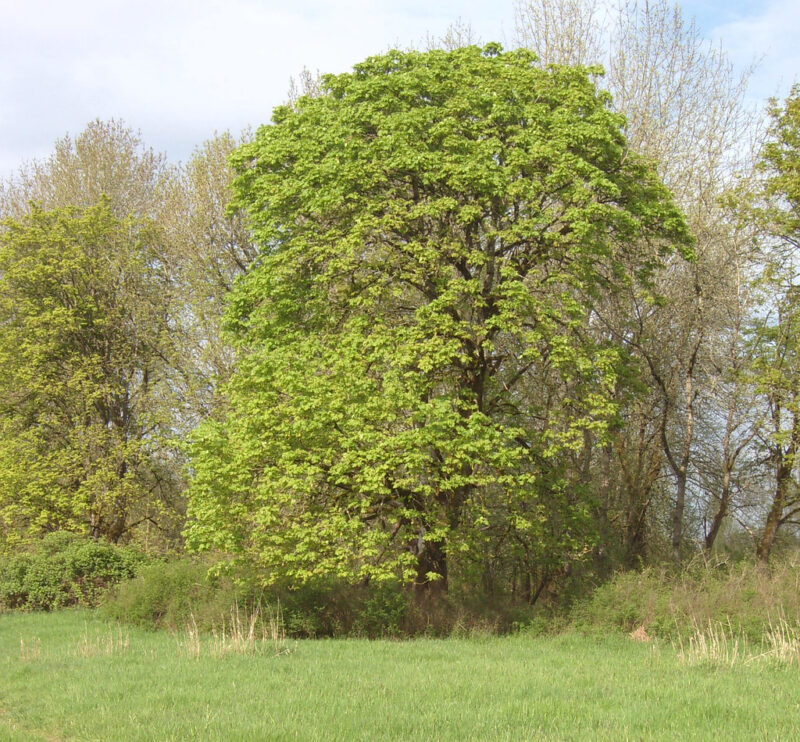
A native of the Pacific Northwest, the Big-Leaf Maple certainly lives up to its name with leaves reaching up to a foot across. This fast-growing tree can reach heights of 50 to 100 feet, providing ample shade during the hotter months. Its robust trunk and broad canopy serve as an excellent habitat for birds and other wildlife.
In the fall, the leaves transitions to vibrant yellow and orange hues, giving a dramatic change to the landscape. Easy to grow in a range of soil types, the Big-Leaf Maple is perfect for park settings or residential gardens where shade is desired.
Eastern Hemlock (Tsuga canadensis)
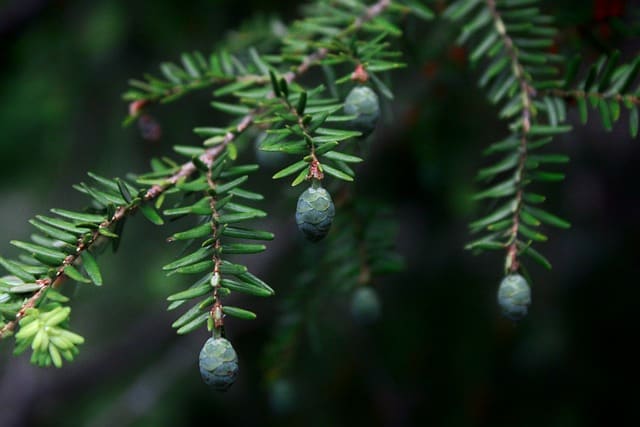
Commonly found in the northeastern regions of North America, the Eastern Hemlock is an evergreen tree that offers year-round shade. It thrives in cool, moist conditions and is often found in forest understories. This tree can grow up to 70 feet tall and offers a dense, cascading foliage that can create a tranquil environment.
Hemlocks are particularly valuable for providing shelter for wildlife and contribute to soil stability, preventing erosion on slopes. Even in winter, they provide valuable structure and green, keeping your landscape lively even without foliage.
American Hop-Hornbeam (Ostrya virginiana)
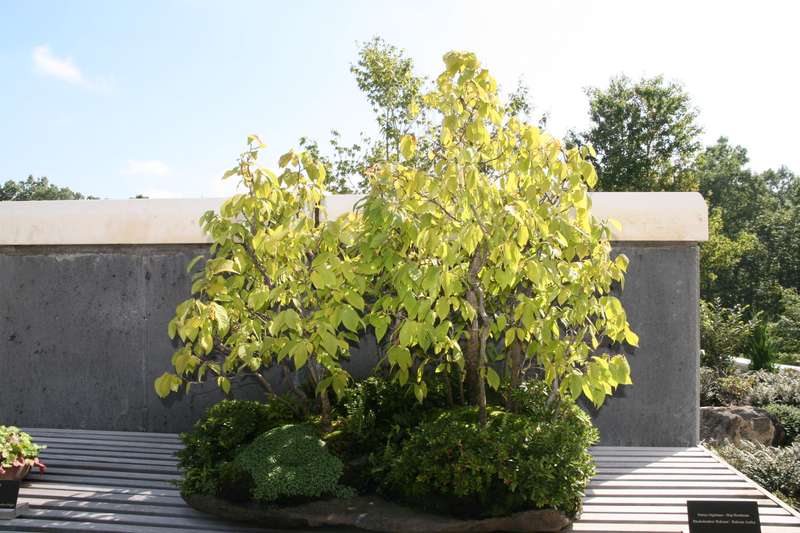
The American Hop-Hornbeam is a smaller tree, usually reaching heights of 20 to 40 feet. Recognized for its distinct, fluted bark and unique hop-like fruit, it is an attractive addition to shaded areas. It grows well in a variety of soils, making it a versatile choice for different environments.
This tree is particularly hardy and tolerant of poor soil conditions, making it ideal for those looking to cultivate a low-maintenance landscape. It also supports numerous wildlife species by providing them with food and shelter.
Common Hoptree (Ptelea trifoliata)

The Common Hoptree is a lesser-known gem that thrives in semi-shade, making it suitable for gardens where direct sunlight may be sparse. With its unique trifoliate leaves and fragrant flowers, it adds aesthetic interest throughout the growing season. This medium-sized tree typically reaches about 15 to 30 feet and prefers well-draining soil.
Its interesting seed structures resemble hops, making it an appealing choice for gardeners looking for something distinctive. Moreover, this tree supports various birds and pollinators, enhancing the ecological value of your garden.
Japanese Maple (Acer palmatum)
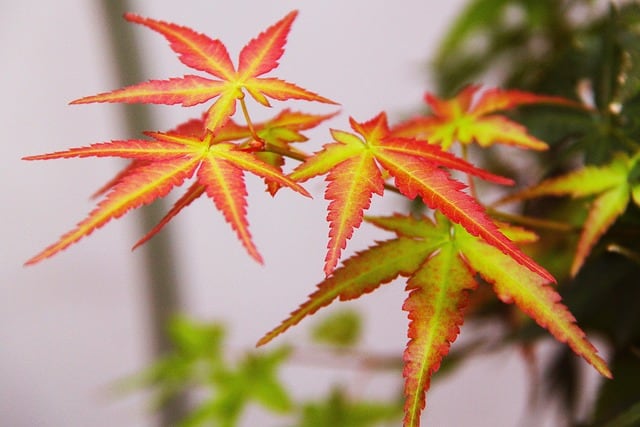
With its stunningly intricate leaves and elegant forms, the Japanese Maple is a favorite for garden enthusiasts looking to create tranquil spaces. Varieties range from small shrubs to trees reaching heights of 15 to 25 feet, making them perfect for nearly any garden setting, especially where shade is desired.
Japanese Maples prefer partial shade and are often grown underneath larger trees or structures. During the fall, their leaves turn fiery shades of red, orange, and yellow, providing seasonal beauty. They are relatively gentle and can be pruned into unique shapes, allowing for artistic expression in landscape design.
Japanese Yew (Taxus cuspidata)
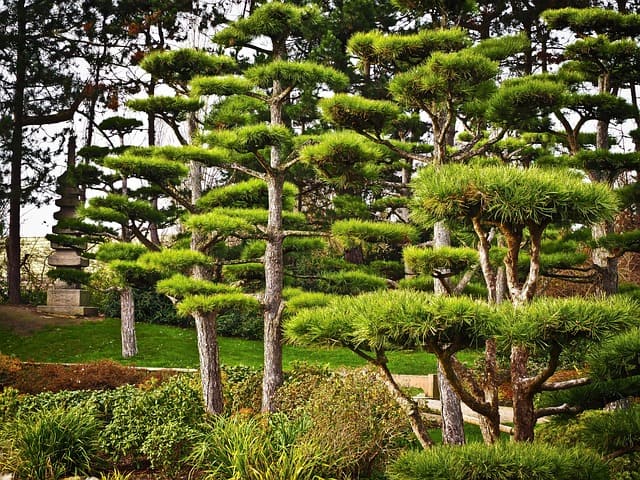
The Japanese Yew is an evergreen tree characterized by its dense foliage and adaptability to shaded areas. It typically grows 20 to 30 feet tall, offering a refined look with its narrow, upright form. This versatile tree thrives even in poor soils and is remarkably drought-tolerant once established.
Beyond its aesthetic appeal, the Yew produces red berries that attract various bird species. While the foliage is toxic to humans, it contributes significantly to wildlife habitat. The Japanese Yew creates a year-round privacy screen, making it ideal for more limited space gardens.
Pagoda Dogwood (Cornus alternifolia)
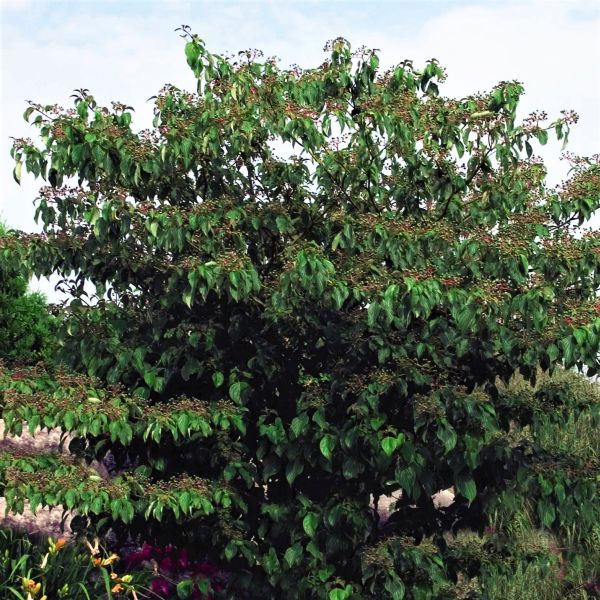
The Pagoda Dogwood is bound to catch your attention with its layered branches and distinctive tiered form, reaching heights of 15 to 25 feet. This tree flourishes in partial shade and moist, well-drained soil, making it a great choice for the edges of woodlands or gardens with light cover.
In spring, this lovely tree produces clusters of fragrant flowers, which entice pollinators, followed by blue-black fruit in the summer that attracts birds. The rich green foliage then transitions into beautiful red and purple tones in autumn, ensuring seasonal interest.
Pawpaw (Asimina triloba)
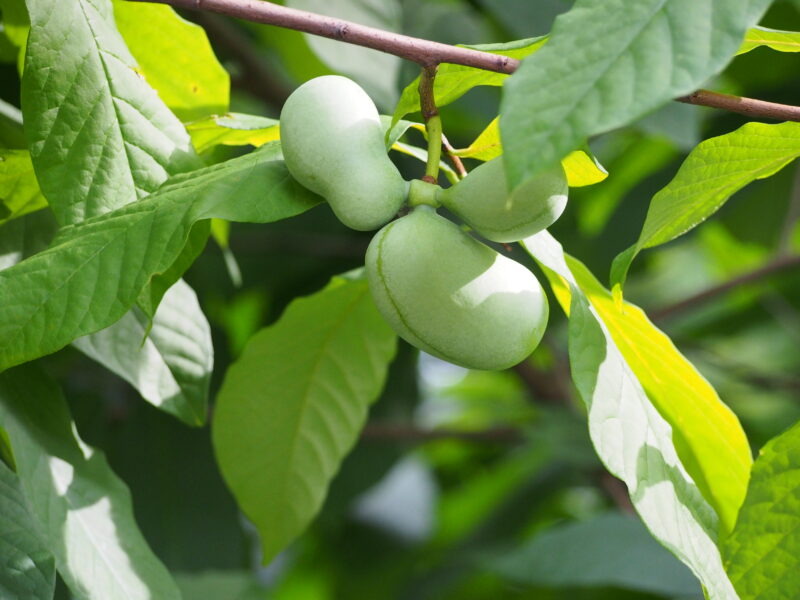
The Pawpaw is a unique tree native to North America, best known for its delicious, custard-like fruits that have a tropical flavor reminiscent of bananas and mangoes. Growing 15 to 30 feet tall, the Pawpaw thrives in partial shade and adapts well to various soil conditions.
Pollinated primarily by flies, this tree provides an important food source for wildlife and can be an excellent addition to edible landscapes. Aesthetically pleasing with large, tropical-looking leaves, the Pawpaw adds a distinctive flair to shaded gardens.
Sugar Maple (Acer saccharum)
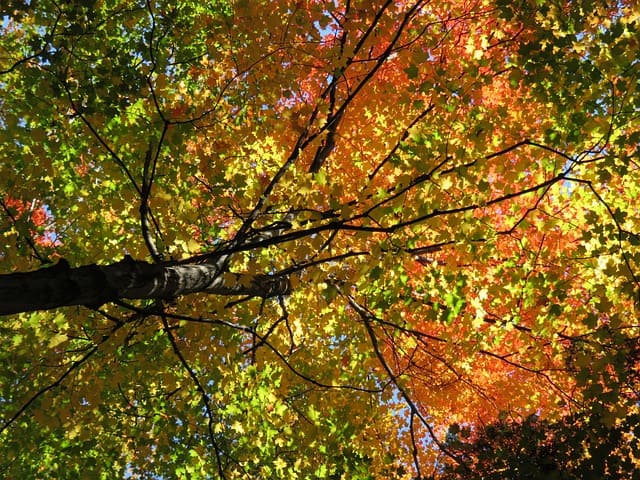
The Sugar Maple is well-loved not only for its stunning fall foliage but also for its iconic role in producing maple syrup. This larger tree often reaches heights of 50 to 75 feet and thrives in a variety of soil types, including those in partial shade.
During autumn, the Sugar Maple creates a stunning spectacle with its vibrant red, orange, and yellow leaves. An important tree in North American forests, it supports many species of wildlife and gives your garden a sense of stability and grandeur.
Fast-Growing Shade Trees
If you’re looking to establish shade quickly, considering fast-growing tree species can significantly impact your outdoor area in just a few years. Here are some of the quickest-growing shade trees that can provide ample cover as they mature:
American Sweetgum (Liquidambar styraciflua)
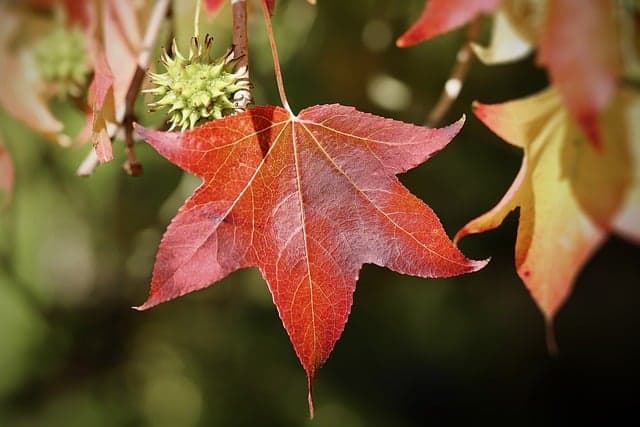
The American Sweetgum is a fantastic choice if you are in a hurry for shade. This tree can grow up to 60 feet tall and is known for its star-shaped leaves, providing a quintessential look of summer greenery that turns into stunning reds and purples in the fall.
American Sweetgum’s growth rate can be substantial, often reaching heights of 30 to 40 feet in just a few years. It prefers well-drained, fertile soils and adapts well to different locations, making it a popular choice for home landscapes that need quick shade.
American Sycamore (Platanus occidentalis)
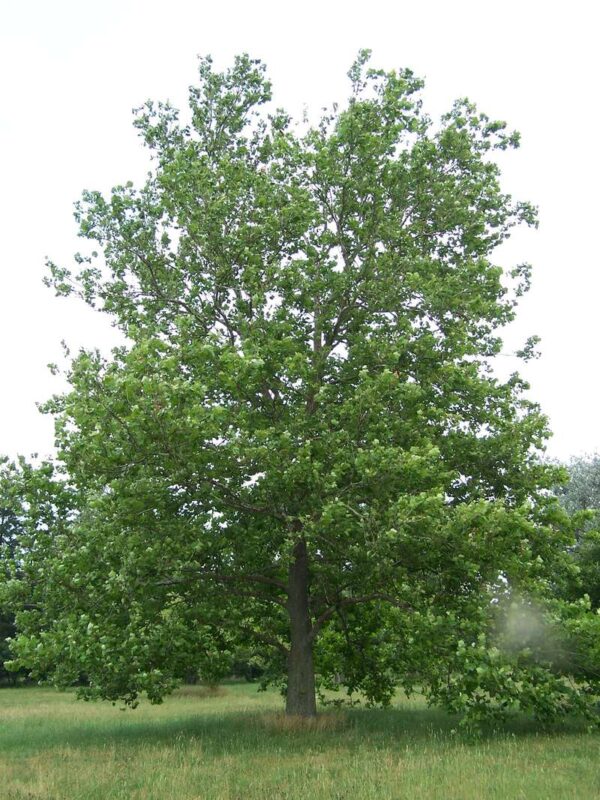
Known for its enormous size and distinctive mottled bark, the American Sycamore can grow up to 100 feet tall, quickly establishing a broad canopy. This fast-growing tree can thrive in wet soils, making it ideal for places near water or in low-lying areas.
Its colossal size provides sweeping shade, perfect for large yards or parks. In the fall, its leaves turn a striking yellow, adding vibrancy to landscapes during the seasonal transition.
Arborvitae (Thuja spp.)
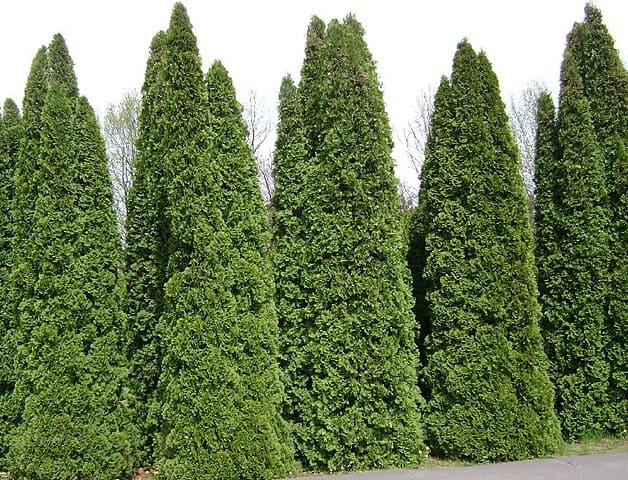
While typically considered shrubs, certain varieties of Arborvitae grow into trees that can reach heights of 40 to 60 feet, providing excellent vertical privacy and shade. These evergreen trees grow quickly and prefer full sun to partial shade, thriving in well-drained soils.
Arborvitae is a popular choice for hedging, landscaping, and as a windbreak due to its dense foliage. Their lush greenery creates a tranquil atmosphere, especially in shaded gardens, providing a stunning backdrop for seasonal flowers.
Dawn Redwood (Metasequoia glyptostroboides)

This ancient tree, once thought to be extinct, has made a resurgence due to its incredible adaptability and distinctive feathery foliage. The Dawn Redwood can grow up to 100 feet tall and is a deciduous conifer, losing its needles in the winter while displaying vibrant green leaves in the spring and summer.
Fast-growing and tolerant of wet conditions, it’s perfect for shaded gardens. Its unique appearance and structure make it an appealing focal point in any landscape.
Eastern White Pine (Pinus strobus)
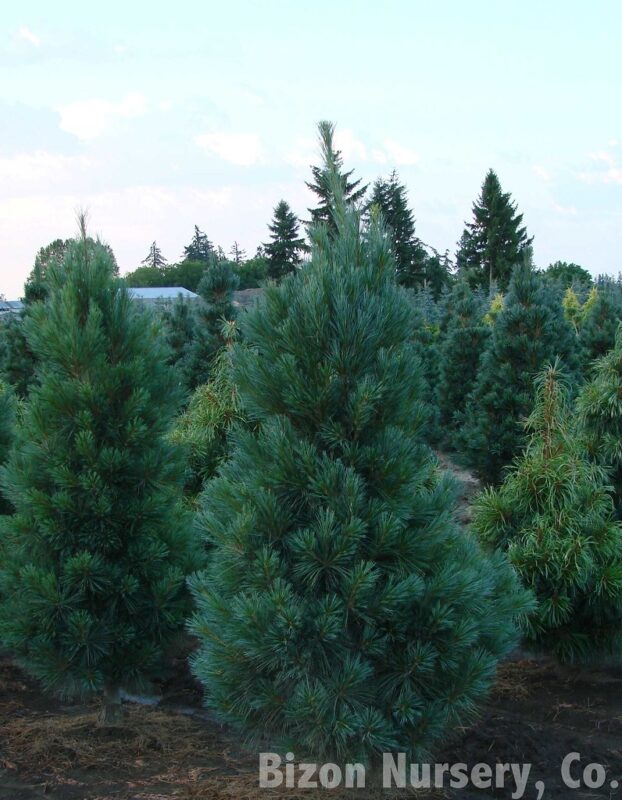
Known for its graceful, long needles and lofty height, the Eastern White Pine can reach up to 80 feet tall. This fast-growing evergreen prefers full sun but tolerates some shade, thriving in various soil types.
Its straight trunk and open crown provide beautiful shade while allowing dappled sunlight to filter through, which is ideal for underplanting with shade-tolerant flora. The Eastern White Pine is also valuable for wildlife, as it offers shelter and food for birds and small mammals.
Empress Tree (Paulownia tomentosa)

The Empress Tree is notorious for its rapid growth, often reaching heights of 30 to 50 feet within just a few years. Known for its large heart-shaped leaves and beautiful violet flowers, this tree thrives in full sun to partial shade and boasts a unique tropical appearance.
While it grows fast, gardeners should be aware of its potential invasiveness in some areas. However, when controlled, its stunning flowers and large canopy can provide splendid shade and a wonderful environment for relaxation.
Hackberry (Celtis occidentalis)
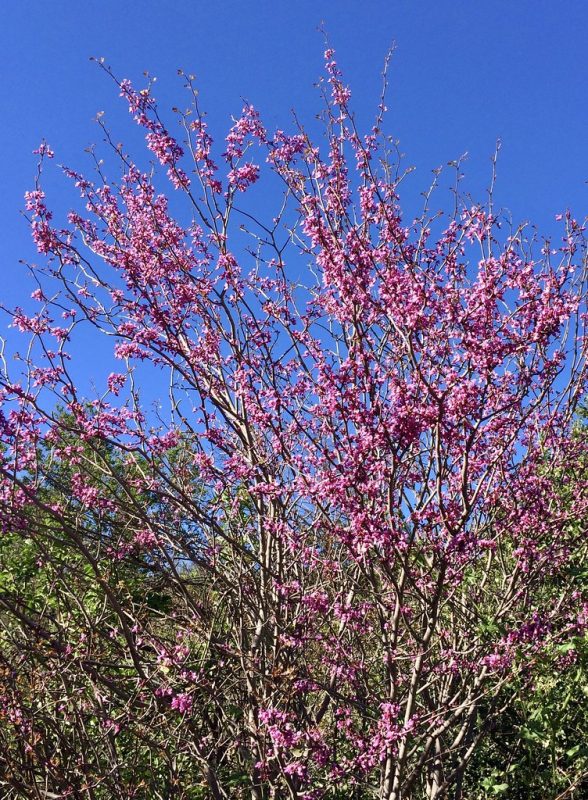
The Hackberry tree is a resilient native species that can withstand drought and harsh growing conditions, making it a practical choice for various landscapes. It reaches heights of 40 to 60 feet and features a broad, spreading canopy.
Hackberry trees grow rapidly and are known for their rough, textured bark. Providing excellent shade, they attract a wide variety of birds and wildlife, promoting biodiversity within your garden.
Washington Hawthorn (Crataegus phaenopyrum)
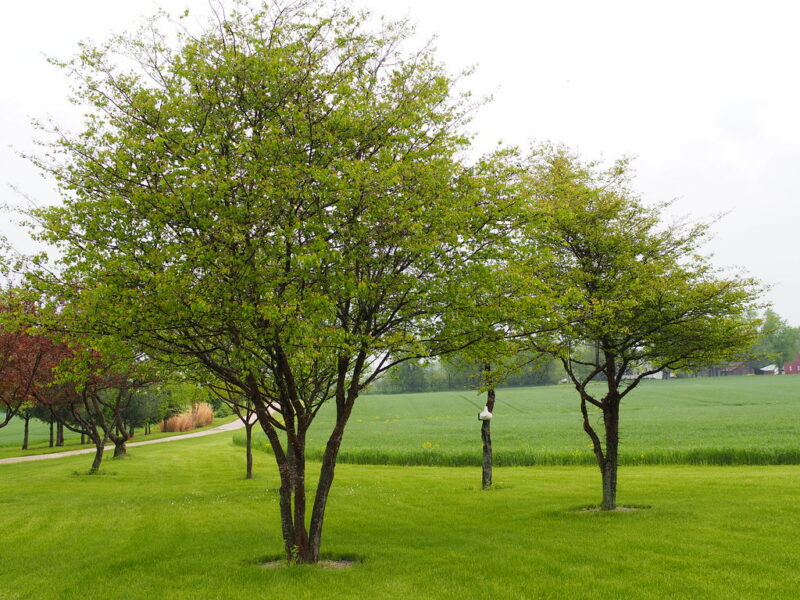
With its rounded form and dense clusters of white flowers in spring, the Washington Hawthorn is an ideal fast-growing shade tree that reaches about 25 to 30 feet tall. This tree tolerates a range of soil types and environmental conditions, thriving in full sun to partial shade.
Its small red berries in the fall attract various birds and wildlife, while its glossy green leaves turn beautiful shades of yellow, orange, and red in the autumn. An excellent choice for urban areas, it doubles as an attractive ornamental.
Japanese Zelkova (Zelkova serrata)
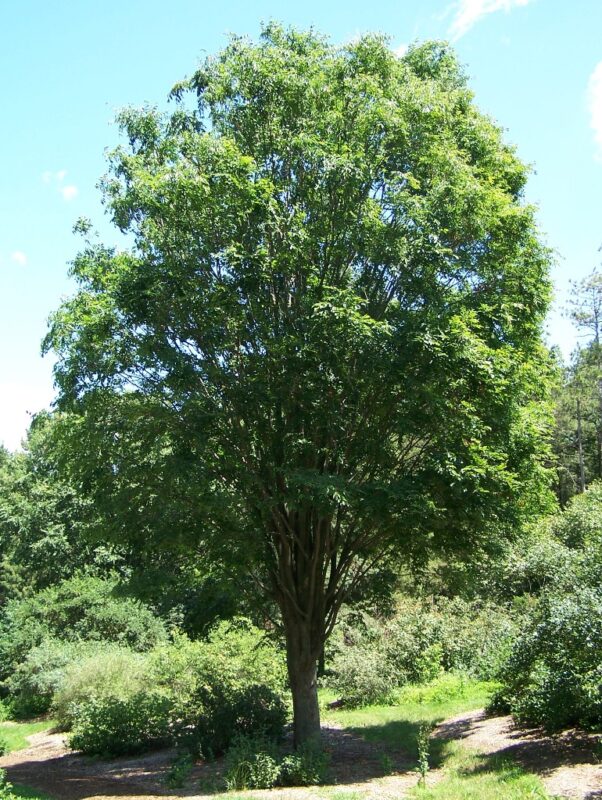
Recognized for its impressive vase-like shape, the Japanese Zelkova can grow 50 to 80 feet tall. This hardy tree is known for its resistance to various environmental stresses, including urban conditions, making it a fantastic choice for homeowners seeking quick shade in challenging locations.
The Zelkova offers lush green foliage in summer, turning to brilliant gold in the fall, making it an aesthetically pleasing addition to any landscape, offering shade along sidewalks, driveways, or in parks.
Northern Catalpa (Catalpa speciosa)
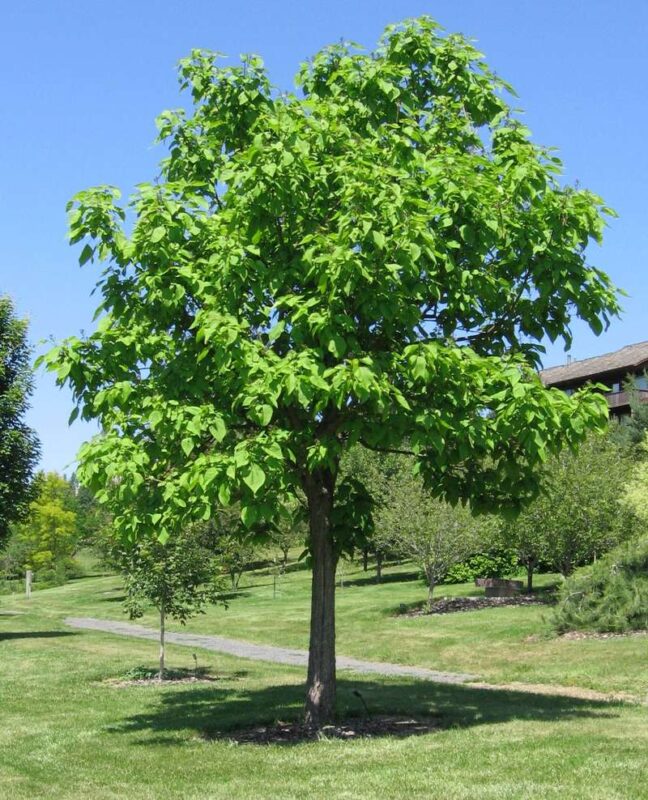
The Northern Catalpa is known for its large, heart-shaped leaves and showy white flowers, which blossom in late spring. Reaching heights of 40 to 60 feet, this tree grows rapidly, providing ample shade for outdoor activities and gatherings.
The unique seed pods that hang down from the tree add an interesting visual element throughout the year. Catalpas are also beneficial for wildlife as they attract bees and various pollinators, further enhancing your garden’s ecosystem.
Northern Red Oak (Quercus rubra)
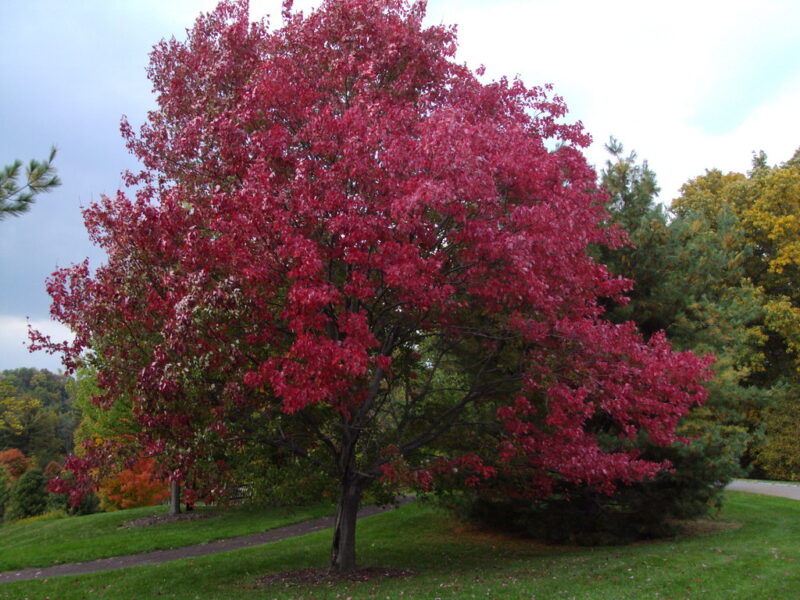
The Northern Red Oak is a quintessential North American deciduous tree, known for its robust growth and stunning autumn foliage. Growing up to 60 feet tall, this tree thrives in an array of soil conditions, making it suitable for various parts of the landscape.
In addition to providing excellent shade, its acorns serve as vital food sources for numerous wildlife species. The vibrant red leaves in autumn add dramatic color to your landscape, enriching your garden with seasonal interest.
Paper Birch (Betula papyrifera)
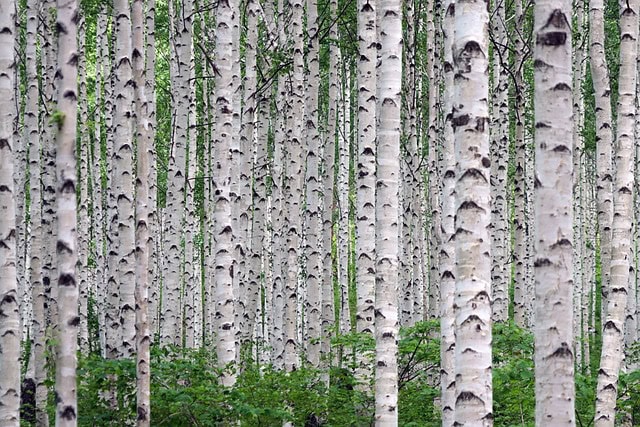
The Paper Birch is celebrated for its stunning white bark and delicate, pendulous branches. Growing up to 50 feet tall, this medium-sized tree flourishes in well-drained, moist soils, making it suitable for both shaded and sunnier conditions.
In spring, it produces lovely catkins, and in autumn, the leaves turn a brilliant yellow, ensuring remarkable scenery throughout the seasons. Its aesthetic value, combined with its compatibility with various settings, makes it a quintessential choice for gardens seeking both beauty and shade.
Pin Oak (Quercus palustris)
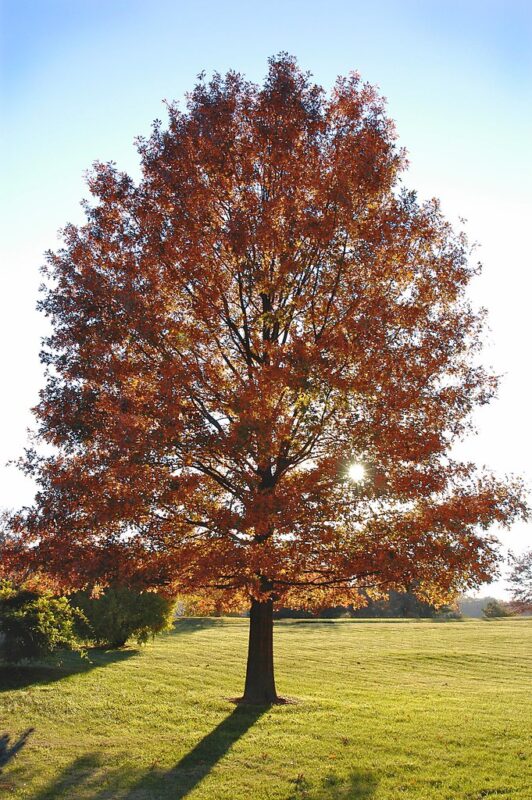
The Pin Oak is a fast-growing tree that can reach 60 to 70 feet in height and is known for its characteristic pointed leaves and pendulous lower branches. Thriving in wet areas, it is perfect for low-lying yards or near water sources.
Providing dense shade during the summer months, it showcases vibrant fall color as its leaves transition to striking red and russet tones. Its acorns provide food for wildlife and add further ecological significance to any garden.
Quaking Aspen (Populus tremuloides)
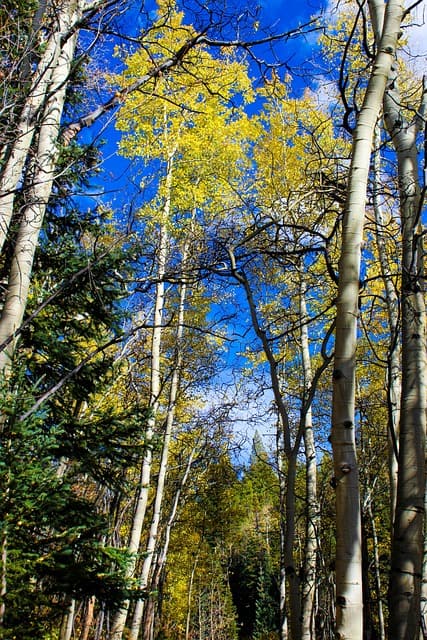
Often recognized by its striking white bark and shimmering leaves, the Quaking Aspen is a fast-growing tree that can reach heights of 20 to 50 feet. These trees thrive in a multitude of growing conditions and are commonly found in mixed forests and groves.
As a pioneer species, the Quaking Aspen can establish in various habitats and provide a stunning display of golden-yellow foliage in the fall. Their ability to thrive in light shade makes them ideal for woodland gardens or areas near larger trees.
Red Maple (Acer rubrum)
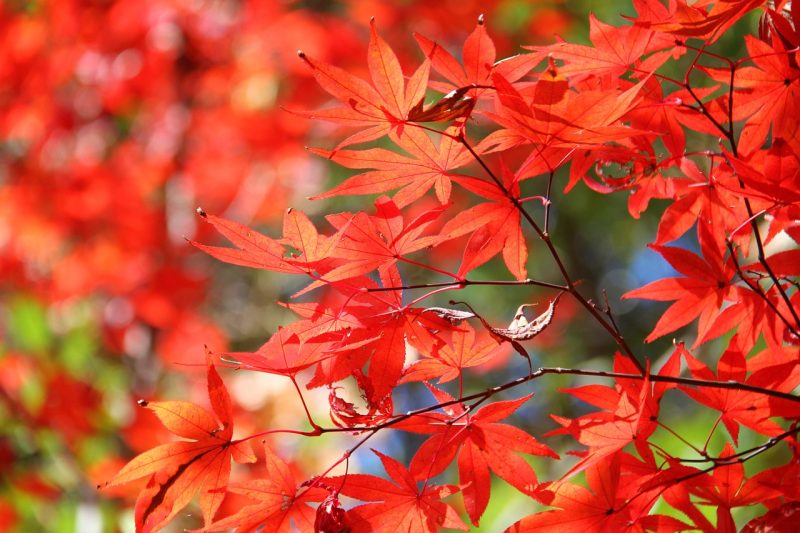
The Red Maple is a versatile tree found throughout the eastern United States that can grow up to 60 feet tall. Known for its rapid growth and adaptability, it thrives in various soil types, including wet conditions.
Red Maples are particularly valued for their vibrant autumn color, which is among the earliest to develop in the fall season, boasting shades of bright red and orange. This tree is also a crucial habitat for various wildlife and serves as an excellent option for gardens in need of quick, effective shade.
River Birch (Betula nigra)
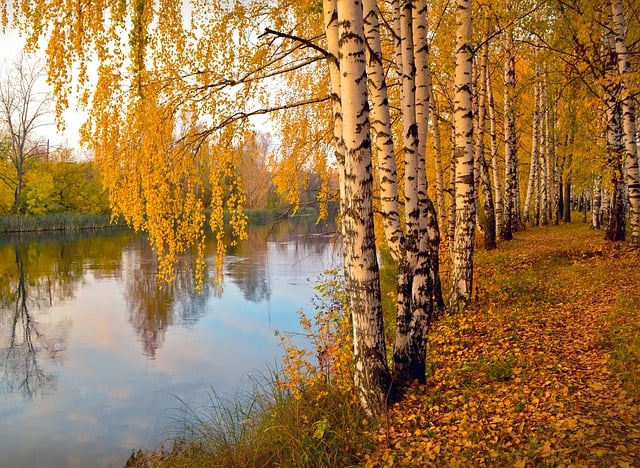
Famed for its distinctive, peeling bark and elegant appearance, the River Birch thrives in wet soil and is perfect for areas prone to flooding. It typically reaches heights of 40 to 70 feet and offers a stunning display of green foliage that turns gold in the fall.
The River Birch provides solid shade coverage and attracts various wildlife, especially birds and insects, making it a worthwhile addition to any garden. Its unique texture and color add beauty and charm to landscapes.
Silver Maple (Acer saccharinum)

The Silver Maple is characterized by its rapid growth and large, lobed leaves that have a silvery underside, which creates a striking visual effect as they flutter in the wind. Growing to heights of 50 to 80 feet, this tree quickly provides extensive shade coverage.
In the fall, Silver Maples turn to bright yellow, making them visually stunning throughout the seasons. They’re excellent choices for quick shade, especially in landscaping that requires growth in a short timeframe.
Tulip Poplar (Liriodendron tulipifera)
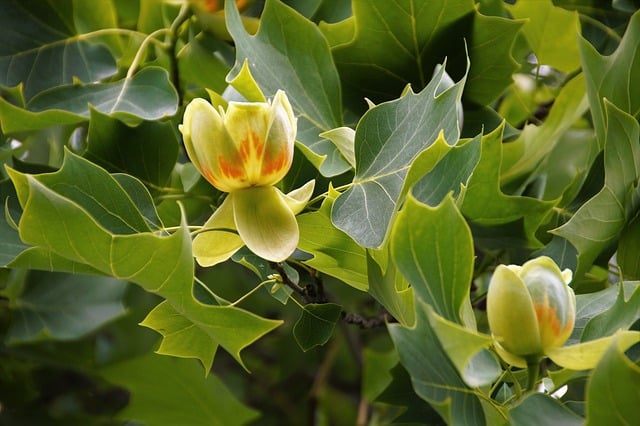
The Tulip Poplar stands tall and elegant, growing up to 100 feet or more. This tree grows rapidly and provides lush, broad leaves that create ample shade on warm days. The unique tulip-shaped flowers bloom in late spring, providing a beautiful spectacle.
Tulip Poplars prefer well-drained soils and full sun but can tolerate partial shade. Their impressive height creates striking vertical presence, making them ideal for large yards or parks.
Wax Myrtle (Morella cerifera)
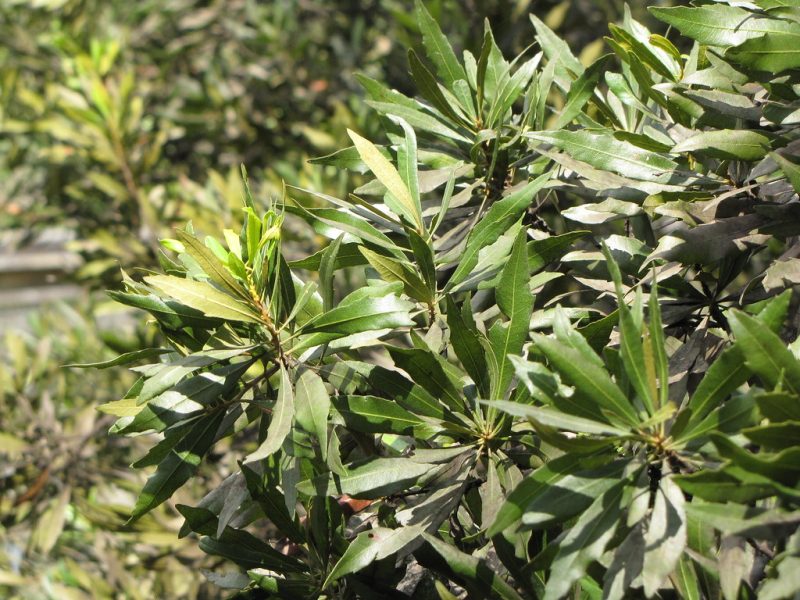
This evergreen shrub or small tree typically reaches heights of 10 to 15 feet. The Wax Myrtle thrives in a range of soil types, including sandy or salty conditions, making it adaptable to various growing environments.
Valued for its aromatic leaves, this plant can provide partial shade while developing into a dense screen or windbreak. Wax Myrtles are also known for attracting various wildlife, as their berries serve as vital food sources for birds.
Weeping Willow (Salix babylonica)
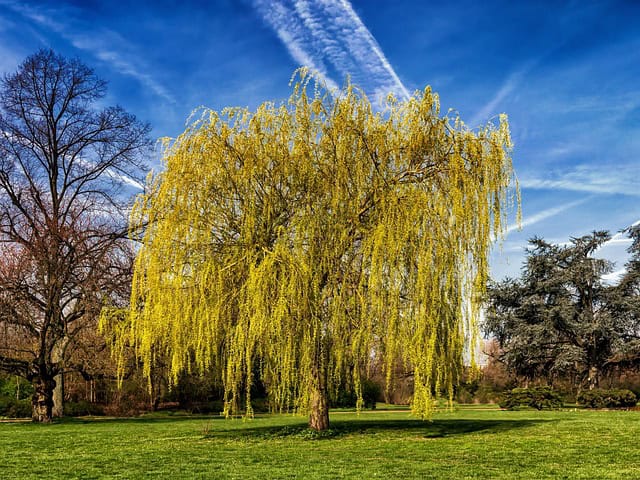
The Weeping Willow is a well-loved tree characterized by its long, sweeping branches that create a dramatic and picturesque shade. It can grow quite quickly, reaching up to 50 feet tall and thriving near water sources or in moist soils.
The unique cascading foliage creates a relaxed atmosphere, making it an excellent choice for gardens near water bodies or areas where a laid-back, tranquil vibe is desired. Its beauty and fast growth rate have solidified its place as a favorite among gardeners.





